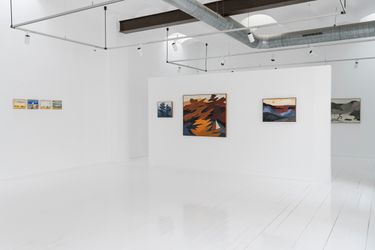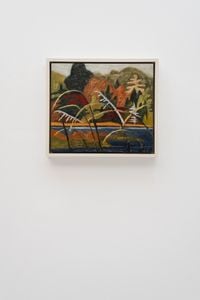
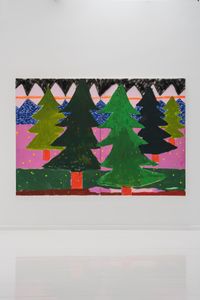
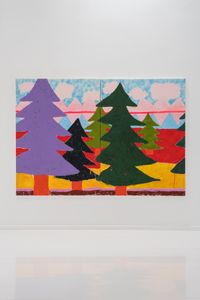
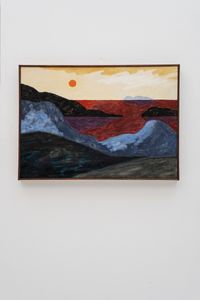
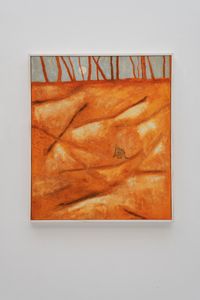
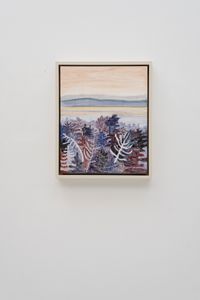
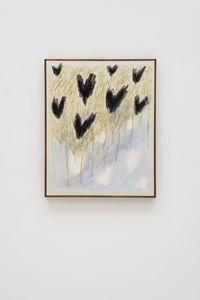
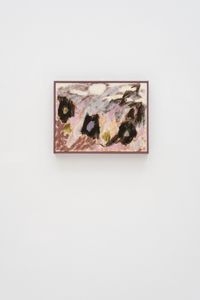
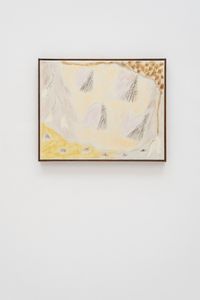
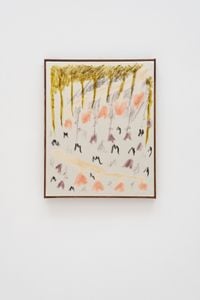
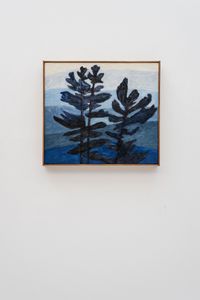
As a way of inaugurating a new series of curated group exhibitions, Alzueta Gallery ispleased to present New Landscapes, a group show about the timeless concept of 'landscape', its interpretation and re-presentation. This exhibition has been conceived withthe intention of establishing conversations between five of the gallery's own represent-ed artists and eight international artists invited to the main exhibition space in Sèneca Street during the month of March.
As a noun, a landscape is: 1. a picture, sketch, engraving or other artistic representationof a group of elements such as meadows, forests, mountains, etc.; 2. the branch of paint-ing, photography, etc., that deals with this type of imagery; 3. a view, perspective orpanorama of a landscape or tract of land, whether natural or created by man.
'Landscape' itself, in one of those words that is hard to explain. One of those words thatmean so many things that, ironically, words feel short to describe them and do justice toall that they encompass. It may be this mysticism and small but provocative challenge ofrepresentation the reason why portraying landscapes has been one of the most stable artsubjects of all time. No matter when we are in history, no matter where we are, someonehas always tried to depict a landscape. Now, curating this exhibition, we realise that thekey to this phenomenon of imagery is right there, in those 'someone(s)'.
The focus point of New Landscapes is not, as incredible as it may sound, the landscape,but the one who has digested and portrayed it. Especially at a time when the collectiveimaginary is more collective than ever thanks to new technologies, it is particularly interesting and precious that each artist generates their own idea of what a landscape is,receiving and reinterpreting the idea we all have of the concept. We could say that, inessence, New Landscapes almost verges on the idea of portraiture through the representation of landscaping.
Questions about time, memory, empathy and loneliness are the basis of Barbara Alegre(Spain, 1976)'s work, one of her means to find answers are landscapes; looking for anal-ogies between cinematography and everyday life through representations of spacesmakes the work of Hugo Alonso's (Spain, 1981) ****corroborate this portrait-landscape the-ory is repeated both in art history as well as on movie screens.
'I use the nature that surrounds us to create works in which I can confront my innerconflicts,' says Raffael Bader (Germany, 1987) when talking about his work. Vinna BeginNugroho (Indonesia) describes her landscape works as portraits of experiences. LachlanHinwood (United States) is not far from this concept and his locations are the result ofa meditative practice on the transcendental relationship with the landscapes around us.Jon Koko's (Sweden, 1988) dreamlike landscapes are not just mechanical representations, they are memories. The mountains and meadows of Guim Tió (Spain, 1987)are flashbacks of things that, in truth, never happened. The mind of Gabrielle Graessle(Switzerland, 1956) ****functions as a filter between what she sees, what she feels and whatshe ends up representing. This filtering effect is repeated in the work of Xevi Solà (Spain,1969), whose reinterpretation is splashed with colours as is to be expected from a masterof chromaticism.
That painting landscapes is not, in fact, just painting landscapes, is the reason why RobLyon (United Kingdom, 1982) has been painting the surroundings of the South Downsfor almost a decade but no two works are ever carbon copies of each other.
The practice of John Joseph Mitchell (United States, 1989) elicits the emotional range ofvisual experience. James Morse (United States, 1982) uses earth imagery as a languageto explore the emotions that arise when contemplating our existence.Larissa Lockshin (Canada, 1992) consistently cultivates a spatial awareness in the viewerthrough materials and their relationship to the body, going a step further and sowingthis doubt as to whether our landscapes have ever been objective in the viewer's mind.In the historical moment in which the landscape goes from being a 'background' to beingthe main element of works, we overlook the fact that nature's famous ability to under-stand and reflect human existence was not something casual. Painting landscapes waspainting portraits; painting landscapes was always an excuse.
No landscape in New Landscapes is really just a landscape. There is no representation,only interpretation. This is not a collection of landscapes but self-portraits, conscious orunconscious is a different, and long, story.This almost accidental quality of nature to awaken an involuntary introspection is a smalltreasure that, from Alzueta Gallery, we wanted to bring to the forefront and give it theimportance that this event deserves.
History is full of accidental self-portraits hidden behind mountains, lakes, plains andskies.
Press release courtesy Alzueta Gallery.
